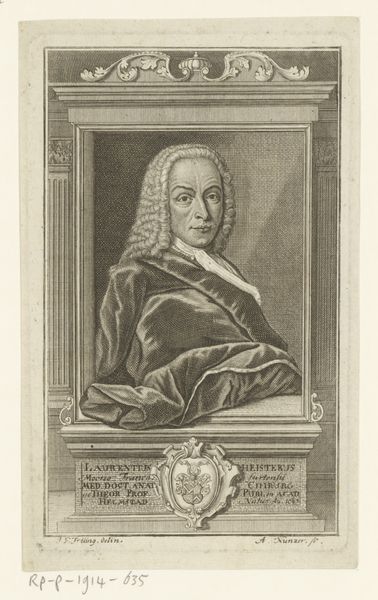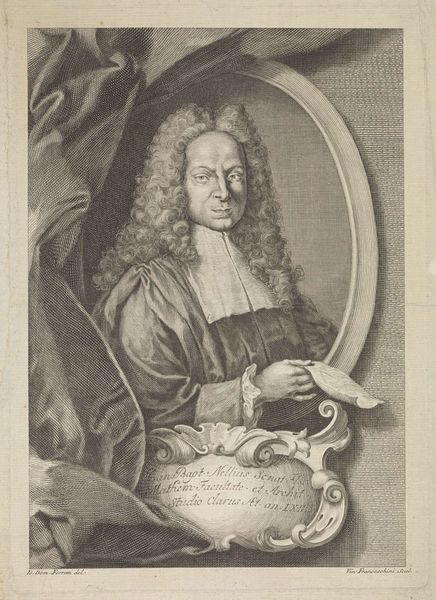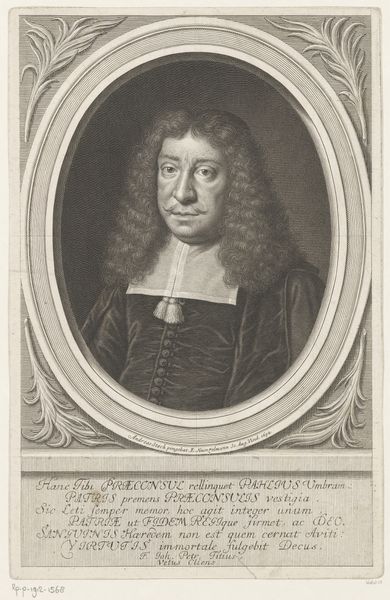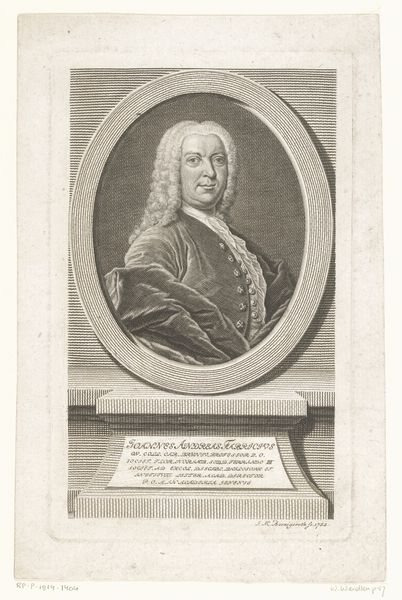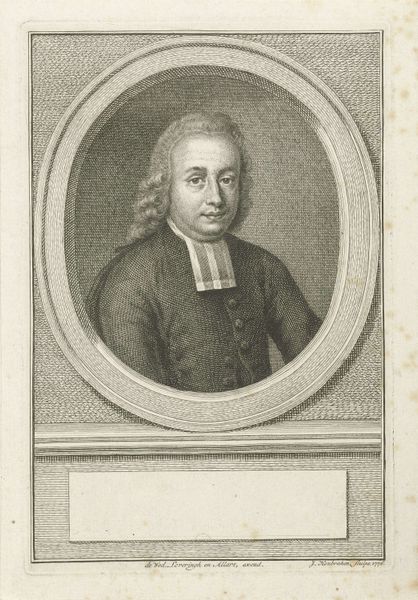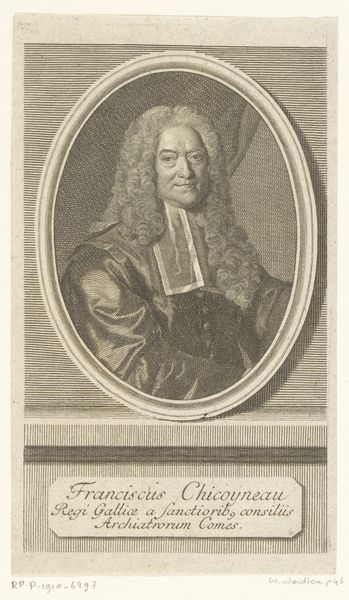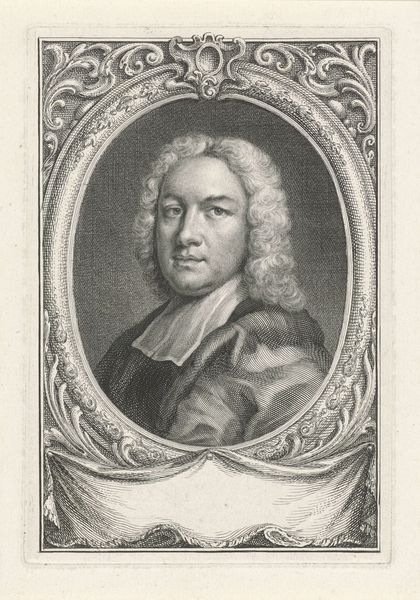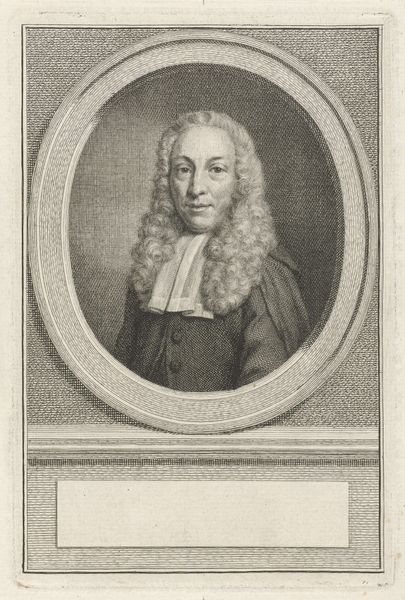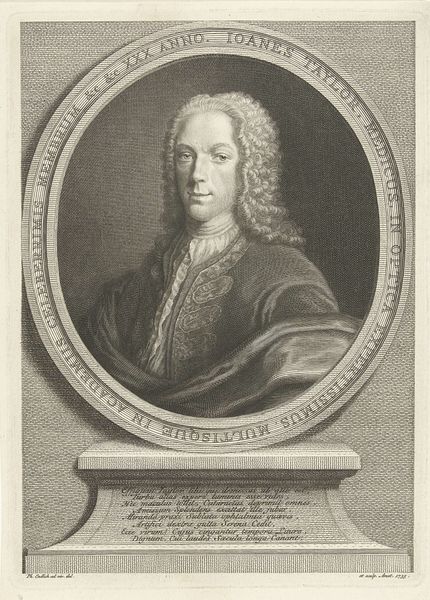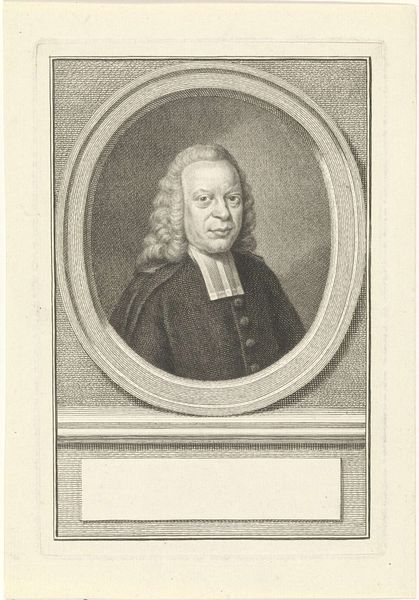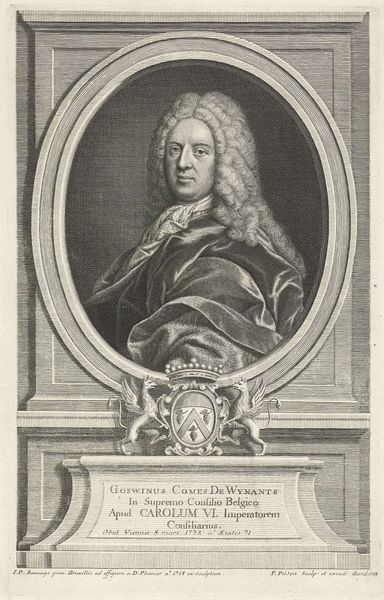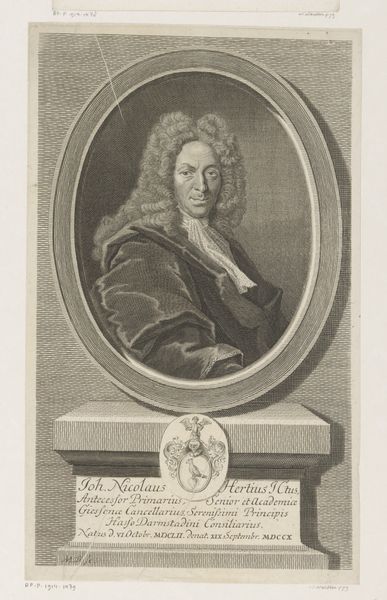
Dimensions: height 171 mm, width 113 mm
Copyright: Rijks Museum: Open Domain
Editor: This is "Portret van Rutger Schutte," a drawing, engraving, or print by Jacob Houbraken from around 1769 to 1771, at the Rijksmuseum. I'm struck by the texture created by the engraving, especially in the rendering of the hair. How do you interpret this work, particularly from a formal perspective? Curator: The composition demonstrates a sophisticated understanding of baroque aesthetics. Note how the oval frame, while containing the figure, is itself disrupted by elements extending beyond it, creating a dynamic interplay between confinement and expansion. Editor: That's interesting; I hadn't considered that push and pull of the frame. Can you expand on that dynamic? Curator: Consider the textures; observe how the varied densities of lines across the figure and background generate light, shadow, and, thus, volume. Observe the semiotic structure implicit within those stylistic choices and how the artist leverages linear texture and variation for communicating depth of form, the presence of ambient light, and more. Also consider the books and musical instrument in relation to the subject and setting. How do those contribute to your understanding? Editor: It feels like the objects situate him as a man of letters, perhaps even a musician. Curator: Precisely. Notice how the portraitist exploits the linearity in mark-making to create a powerful, compelling representation. Do you see how the manipulation of light and shadow creates a specific reading? Editor: I think the strong contrast does lend an air of importance. I now understand the importance of purely visual interpretation in this and other artworks. Curator: Indeed. Focus on the artifice is important. Appreciating those elements— the linework, spatial dynamic, balance, or lack thereof—helps us approach artworks, in general, in a new way.
Comments
No comments
Be the first to comment and join the conversation on the ultimate creative platform.
